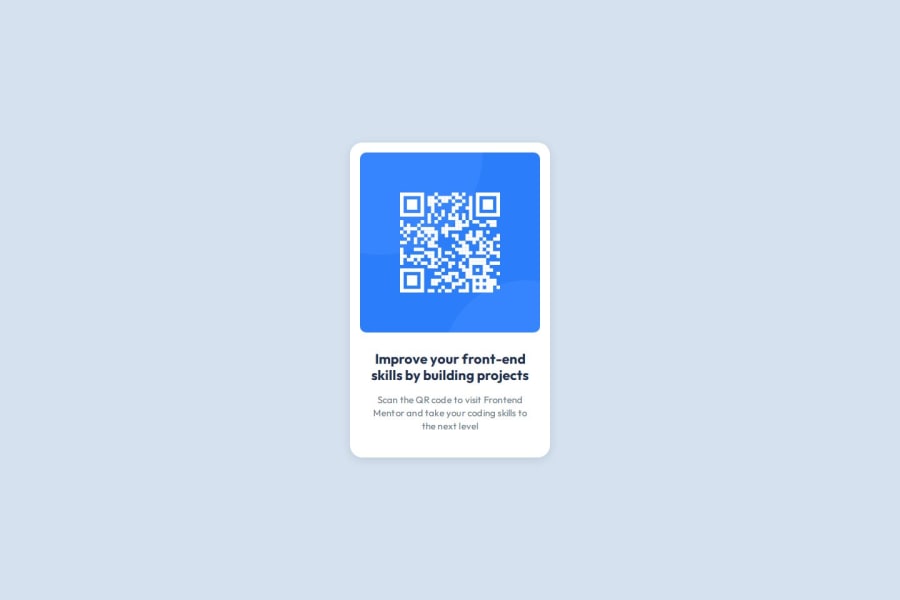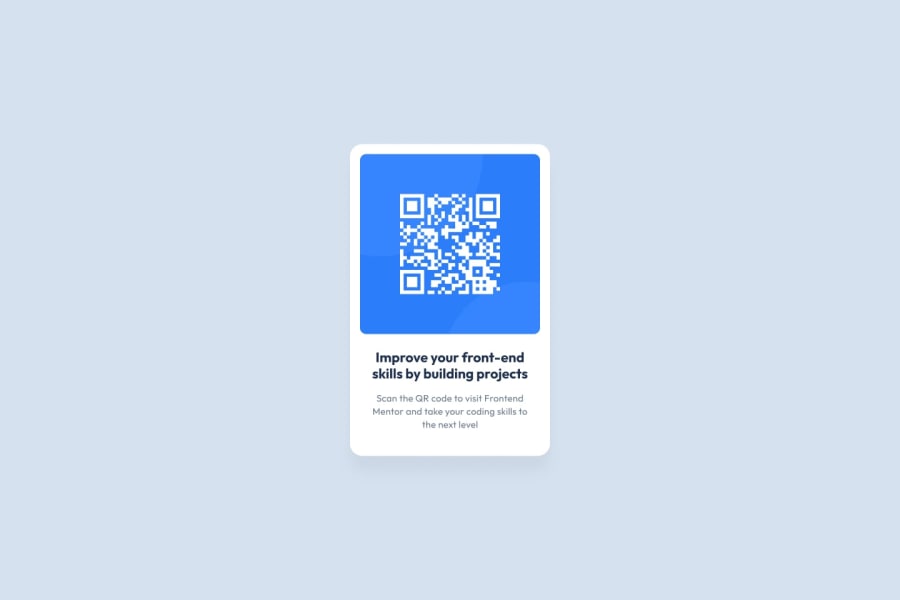
Design comparison
Solution retrospective
In this project, I am most proud of implementing the component first and then refactoring according to the style guide. For example, initially, I directly defined the card's background color, but after refactoring, I used CSS variables to manage the colors. I found this approach to be much more maintainable.
Next time, I would like to set up CSS variables from the beginning and design the styles in a more structured way. This will help save time and effort during the refactoring process.
What challenges did you encounter, and how did you overcome them?I faced challenges in centering the card layout. I initially tried using margin and padding, but they didn’t work as expected. Later, I referred to an example on another website that used Flexbox for card alignment, and I was able to resolve the issue effectively.
What specific areas of your project would you like help with?I would like to know how CSS experts define variables, name classes (e.g., using BEM methodology), and handle responsive design. Specifically, I’m curious about how to improve the structure of my CSS code and if there are any better ways to organize or optimize it. Feedback on these aspects would be greatly appreciated.
Community feedback
- P@kaamiikPosted 3 months ago
Hi. Congratulation for doing this challenge. I have few notes which may improve your solution:
- Try to use a proper CSS reset at the start of your CSS style. Andy Bell and Josh Comeau both have a good one. You can simply search on the internet to find them.
- Your
font-sizeandmax-widthshould be inremunit notpx. You can read this article about it and why you should not usepxas a font-size.
- For the
.qr-codeimage no need to addwidth. Just add amax-width: 100%and let the browser decide to shrink the image.
- I'm not sure adding the
line-heightin percentage unit is true or not but most of the time we add the line-height unitless.
- In a real-world scenario, this card is part of the website, and you will not use the
h1heading here because the level-one heading is used only once on your page. Therefore, I suggest changing theh1toh2for better practice.
- Add extra padding to your body element so that the card does not stick to the sides when you shrink down your page.
Marked as helpful0@ethan-geekPosted 3 months ago@kaamiik
Hi kaamiik, Thank you for the detailed feedback. Your suggestions on using a proper CSS reset, rem units, and better heading structure were really helpful. I’ll also explore fluid typography and container queries for a more responsive layout. Thanks again for sharing your valuable insights!
0 - P@huyphan2210Posted 3 months ago
Hi @ethan-geek,
I saw your question about CSS and wanted to share my thoughts:
You're doing a good job with CSS variables! I noticed your naming convention seems inspired by properties like
font-weight, where a name like--slate-900might imply a heavy shade of slate. While I personally haven’t named variables this way, it’s a valid approach if it works for you. However, if you're collaborating with others, it’s a good idea to discuss naming conventions to ensure everyone’s on the same page.Regarding the challenge: it’s a beginner-friendly task, and your
styles.csslooks good overall. Just a few suggestions for improvement:- Use
remfor better scalability:
- Instead of
px, consider usingremfor font sizes and spacing. For instance,1remequals16pxby default, so320pxcould be replaced with20rem. For smaller values like15px, you might keep them inpxfor precision, but aim to minimizepxusage where possible.
- BEM (Block Element Modifier) naming:
To enhance readability and scalability, you might consider adopting BEM. Here's an example using your current classes:
- If you have
.containerat the top level, a card inside it could be named.container__cardinstead of just.card. Similarly,.text-containercould become.container__card__text-container.
That said, BEM can lead to long class names when elements are deeply nested. The goal of any methodology, including BEM, is to make your code more understandable and scalable. If it feels like overkill for your project, it’s perfectly fine to skip it. Always prioritize what works best for you and your team.
- Formatting:
- Add consistent spacing between class selectors in your CSS for better readability.
Hope this helps! Keep tackling challenges, and we might have another discussion.
Marked as helpful0@ethan-geekPosted 3 months ago@huyphan2210
Thank you so much for your detailed feedback!
I really appreciate your advice on using rem to improve scalability and accessibility. It’s something I’ll definitely start incorporating into my projects. Also, your suggestions about BEM are very helpful—I’ll experiment with it and see how it works for me in terms of readability and scalability.
Your thoughtful review inspires me to provide detailed feedback like you did. I’ll work on improving my skills to contribute more effectively in future discussions. Thanks again for taking the time to share your insights!
1 - Use
- P@MukarramHaqPosted 3 months ago
Hey!
Amazing solution. I looked at your code and I think your CSS is pretty well structured and easy to read.
The CSS variables are well-defined and I don't see a problem with it. The problem usually comes with naming classes in HTML which is a headache. You can use this resource to learn more about BEM. I usually use TailwindCSS where I really don't have to worry about naming classes so that is pretty cool.
When it comes to responsive design, I suggest start with mobile first approach. The reason being is that it is relatively easier to expand to a larger screen than to cram all of that content into a smaller screen. Trust me it will help out a lot.
But, other than that your solutions looks amazing and good job! :)
Marked as helpful0@ethan-geekPosted 3 months ago@MukarramHaq Thank you for the feedback! Your great advice really motivates me. I’ll proceed with future solutions following the approach you recommended.
0
Please log in to post a comment
Log in with GitHubJoin our Discord community
Join thousands of Frontend Mentor community members taking the challenges, sharing resources, helping each other, and chatting about all things front-end!
Join our Discord
